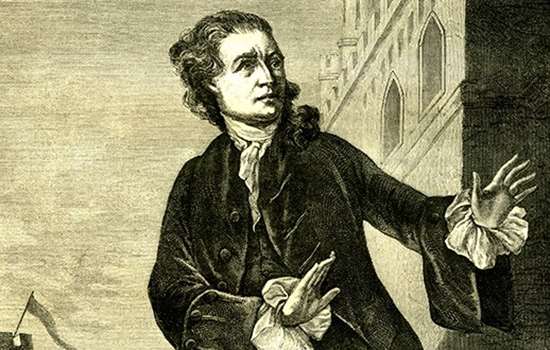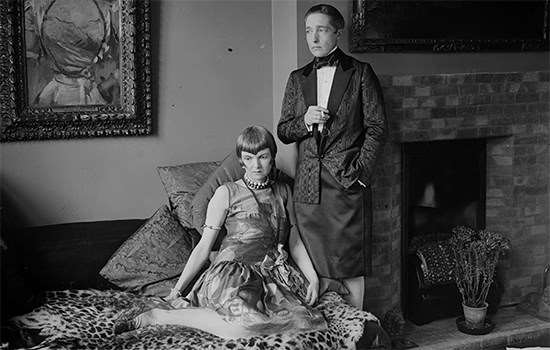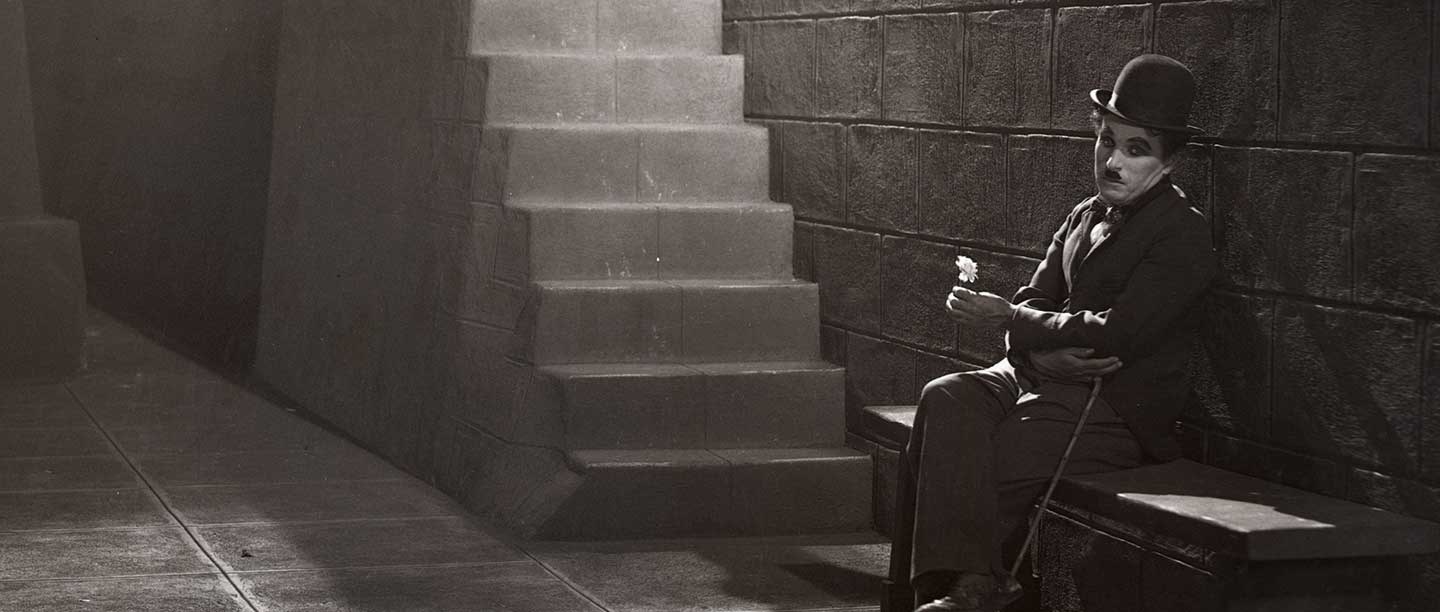Dickens falls on hard times
It was a shock to the young Charles Dickens when in 1822 he moved with his family from a comfortable, well-educated existence in Kent to a small house in lower-middle-class Camden Town, London. It was an even greater shock when his schooling was stopped. His father – a clerk – had gotten into financial difficulty and in 1824 was committed to Marshalsea debtors’ prison, along with Dickens’s mother and the couple’s younger children. The 12-year-old Charles was forced to take lodgings by himself and work in a boot-blacking factory just off the Strand, where he pasted labels onto bottles for six shillings a week. ‘No words can express the secret agony of my soul,’ he later wrote, ‘as I sunk into this companionship… and felt my early hopes of growing up to be a learned and distinguished man, crushed in my breast.’
Dickens did, of course, grow up to be a learned and distinguished man, and he told no one except his friend and future biographer, John Forster, about his brush with poverty. But the experience of being ‘alone and hopeless’ stayed with him, and he became both fascinated and outraged by London’s slums.
The World of Oliver Twist
Dickens wrote Oliver Twist (1837–9) while living at 48 Doughty Street in Bloomsbury in 1837, now home to his blue plaque and the Dickens Museum. But the inspiration for the setting of the novel may have come while he was living at 10 Norfolk Street (now 22 Cleveland Street) in Fitzrovia. He first lived there as a child before the family moved to Kent, but returned with the family as a teenager in 1829. During both periods he would have been aware of the operations of the Cleveland Street Workhouse, just a few doors down the road.
Workhouses offered lodging and basic food in exchange for labour, but conditions in them worsened following the introduction of the Poor Law Amendment (known as the New Poor Law) in 1834. The Act abolished ‘outdoor relief’, forcing people to go the workhouse to seek help, but the regimes were so harsh that only the most desperate would admit themselves. The workhouses became like prisons – inmates had to wear uniforms and children were separated from their parents.
Dickens wrote Oliver Twist partly in protest at these conditions. The severe punishments handed out to Oliver for asking ‘Please Sir, may I have some more?’ weren't just the product of Dickens’s imagination – the system seemed designed to punish rather than nourish the poor. Even one of the novel’s characters had grounding in reality – the tallow-chandler’s shop opposite Cleveland Street Workhouse was owned by a man called Bill Sikes. The real Sikes may not have been a murderer like the one in Oliver Twist, but the memory of Cleveland Street Workhouse was clearly fresh in his mind while he was writing the novel just a few streets away at Doughty Street.
Towards Welfare Reform
Dickens continued to protest against the exploitation of the poor through his journalism. In 1849 he wrote a series of articles for The Examiner highlighting the cholera outbreak and subsequent deaths of 180 children at an establishment for pauper children in Tooting. In 1850 he wrote ‘A Walk in a Workhouse’ for his journal Household Worlds which ends with Dickens looking into the eyes of a child and imagining him asking ‘for a little more liberty – and a little more bread.’
Dickens was one of many writers and reformers who were raising awareness of the cruelty of the Victorian welfare system at this time. In 1851 Henry Mayhew published London Labour and the London Poor, which presented in candid detail the everyday living conditions of London’s working classes, and towards the end of the 19th century Seebohm Rowntree and Charles Booth each produced damning social surveys which revealed the extent of poverty in Britain.
Welfare reforms finally arrived in the early 20th century under the watch of Liberal politicians such as Sir Henry Campbell–Bannerman, HH Asquith and David Lloyd George. However the reforms came too late for Hannah Chaplin and her sons, Sydney and Charlie.
Chaplin and the Workhouse
In 1896 some 60 years after Dickens wrote Oliver Twist, 7-year-old Charlie Chaplin was admitted to Newington workhouse with his mother and brother. The children were separated from their mother, given uniforms and had their hair cut short. After three weeks Charlie and Sydney were transferred to the Central London District School at Hanwell in rural Ealing. The school was a version of the workhouse, intended solely for destitute children.
It was a formative period for young Charlie. He recalled being taught to write his name ‘Chaplin’ (‘The word fascinated me and looked like me, I thought’), but he also remembered the stigma of poverty:
Although at Hanwell we were well looked after, it was a sad existence. Sadness was in the air; it was in those country lanes which we walked, a hundred of us two abreast...the locals staring at us! We were known as inmates of the ‘booby hatch’, a slang term for workhouse.
During this time Charlie and Sydney were briefly reunited with their mother. Desperate to see her sons, Hannah Chaplin discharged herself from the workhouse and spent a day with them in Kennington. They played in Kennington Park and visited a coffee shop but, with few other options, they all returned to the workhouse at the end of the day.
Sydney was eventually sent to the naval training ship Exmouth but Charlie – still too young – was dragged between Hanwell school, his mother, the workhouse and his alcoholic father.
It’s little wonder that when the brothers finally secured their own accommodation at 15 Glenshaw Mansions, they grew extraordinarily fond of it. Now marked by a blue plaque, Charlie called the flat his ‘cherished haven’.
The Hollywood Tramp
Although made famous on Hollywood’s big screens, Chaplin’s Little Tramp was born in London. Chaplin recalled that the Tramp’s distinctive outsized trousers and flat-footed walk were inspired by a man called Rummy Binks, who he watched as a child from the streets of Lambeth:
He had a bulbous nose, a crippled up rheumatic body, a swollen and distorted pair of feet and the most extraordinary pair of trousers I ever saw. He must have got the trousers from a giant and he was a little man. When I saw Rummy shuffle his way across the pavement to hold a cabman's horse for a penny tip, I was fascinated. The walk was so funny to me that I imitated it. When I showed my mother how Rummy walked, she begged me to stop because it was cruel to imitate a misfortune like that. But she pleaded while she had her apron stuffed into her mouth. Then she went into the pantry and giggled for ten minutes.
Chaplin’s genius was to turn genuine hardship into genuine laughs. The Tramp quickly became Chaplin’s vehicle for satire as well as slapstick comedy. In one of Chaplin’s most famous films, The Kid (1921), the Tramp finds an orphan baby and brings him up as his son, albeit on a life of petty crime. When the boy is forcibly removed by a welfare officer, we might detect bitter glimmers of Chaplin’s experiences of being separated from his mother as a young boy. The brutal way in which the authorities treat the child certainly gives an indication of how Chaplin felt about institutionalised welfare.
Ironically, Chaplin’s Tramp character eventually made him the highest paid actor in Hollywood.
(Top image: City Lights © Roy Export S.A.S)
More Blue Plaque Stories
-

Staging Shakespeare
Travel with us through four centuries of Shakespearean performance, with London’s blue plaques as your guide.
-

LGBTQ Stories
Discover the lesbian, gay, bisexual, transgender and queer (LGBTQ) stories behind some of London’s blue plaques.
-

A literary walk in Kensington
Use our blue plaques app to discover the former homes of Kensington’s literary luminaries on this short walk.
